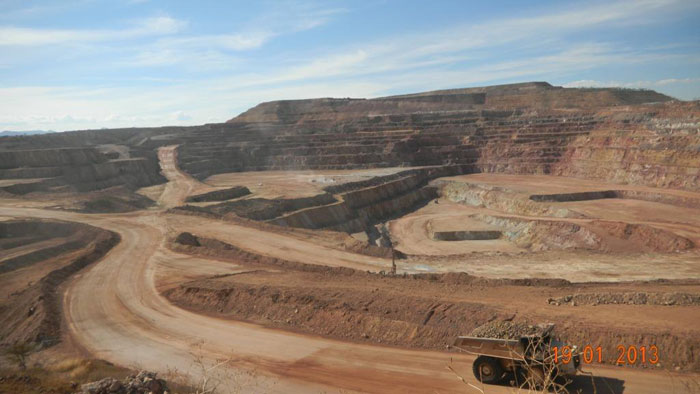VANCOUVER — While many gold producers have been plagued by rising operating costs and shrinking profit margins, Reno-based producer Argonaut Gold (AR-T) has proven to be an exception to the norm. Though the company boosted year-on-year gold production by 50% — and exceeded its guidance in 2012 — the big story is that Argonaut has accomplished its growth while dropping its cash costs per ounce.
In 2012 Argonaut’s production jumped to 108,000 oz. gold at average costs of US$597 per oz., which exceeded guidance figures of 95,000 oz., at costs of between US$625 and US$650 per oz. Average realized prices on gold sales also rose, climbing US$14 to US$1,698 per oz., which resulted in a strong year financially for the company.
Argonaut recorded yearly revenue of US$187 million and net income totalling US$64.9 million, which equates to US16¢ per share, after adjusting for stock-based compensation and other non-cash items. The company finished the year with US$191 million in cash while completing a US$341-million deal for Prodigy Gold’s Magino gold project in Ontario, and kick-starting production at a second mine at its La Colorada gold-silver project in Sonora State, Mexico.
“As you look to this company the most important factor is the constant reliance and need to reduce our operating costs and extend our production profile, and that continued to play forward last year,” commented president and CEO Peter Dougherty during a conference call. “We were able to exceed our production guidance and still achieve those lower average costs. You can sum that up by saying we’ve had a successful year.”
In late February Argonaut updated its guidance for 2013, including a strong second-half push from La Colorada. The company expects to produce between 120,000 and 140,000 oz. gold this year at cash costs between US$630 and US$660 per oz. La Colorada will contribute 40,000 oz. gold at between US$450 to US$475 per oz.
Fresh ore mining has begun at La Colorada, and Dougherty says the mine plan incorporates increased grades quarter over quarter, with production loaded towards the second half of the year. A new crusher and pad should be built by the second quarter.
Argonaut has an extensive capital program in 2013 designed to help streamline its operations. The company will spend US$32 million at its flagship El Castillo gold mine in Durango State, Mexico, including US$15 million to expand throughput capacity and US$7 million on a new crushing-and-overland conveying system. Another US$14 million will be spent at La Colorada, with US$7 million going towards an upgraded crusher system.
“This year is all about expansion,” Dougherty said, noting that Argonaut plans on building out several areas of production at La Colorada and El Castillo.
“We are looking to reduce operating costs by reducing the haulage profiles at El Castillo, and we’ll be expanding into the planned operating areas at La Colorada.”
Argonaut is aiming to complete an updated preliminary economic assessment later this year on the Magino project.
It will incorporate 89,000 metres of drilling completed in 2012, as well as the PD discovery zone in the southeast corner of the main pit.
Work will continue at the company’s San Antonio project on the Baja California peninsula. This is despite ongoing permitting delays, though Dougherty says the project remains on track for production by late 2014.
“The company was formed three years ago with a single purpose: creating value. As a gold equity we felt the need to provide leverage, and we do with a large resource base.” He points out that Argonaut’s global measured and indicated resources are in excess of 12 million contained oz. gold.
Argonaut shares jumped in March on the back of rising gold prices — rising 10%, or 77¢, since late February — though they remain well off a 52-week high of $11.08. The company traded 985,000 shares en route to an $8.48 daily close following its annual report on March 26. At press time, shares traded at $7.61 apiece.
Argonaut maintains 93 million shares outstanding for a $710-million press-time market capitalization.


Be the first to comment on "Cost control drives Argonaut’s success"